Busting the Top 10 Myths for Raw Feeding

It’s time to dispel some myths regarding the scientific aspects of feeding our pets. For far too long, misinformation has been circulating the internet and pet parents have become so confused about what to believe, that they have become scared to feed their pets real food. How crazy is that? In this article, I debunk the top 10 myths about raw pet food and unravel the scientific truths behind them. However, I encourage you to approach this information with an open mind, ready to reconsider your opinions. Knowledge empowers, and as we become better informed, we make better choices.
Myth 1: Garlic is toxic.
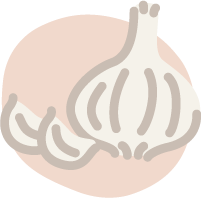
I, too, once subscribed to this belief, a misconception still prevalent within my veterinary profession. The confusion arises from garlic belonging to the Allium family, also known as the onion family. And yes, onions are toxic, in fact most of the onion family is, as they are notorious for containing a much higher level of a toxic compound like thiosulphate. Thiosulphate can break down red blood cells in the body, causing a very serious anaemia. And, just to add additional reassurance, a Japanese study in 2000 administered the equivalent of 20 cloves of garlic a day to 20kg dogs and they still didn’t develop anaemia!
There are many possible benefits to feeding garlic in dogs from flea prevention to immune system support. The general guideline is 1⁄2 to 1 clove of raw garlic, crushed per 15 kg body weight daily. Dogs can eat garlic in small amounts.
Myth 2: Avocados are toxic.

This one still makes it to the top 10 toxic list on some websites! We were finally able to put the avocado toxicity rumour to bed in 2012 when Proctor and Gamble funded a study to test its toxicity. They fed the extract of flesh, skin and pit in high levels and found no issues!
The alleged toxicity stems from Persin, a fungicidal toxin only found in the leaves, bark and minimally in the skin which you would not feed to your dog anyway. I also wouldn’t recommend feeding the stone due to its potential to be a choking hazard or foreign body risk. Avocado flesh is a lovely, nutrient rich food that contains essential vitamins, minerals and healthy fats!
Myth 3: Mushrooms are toxic.

Contrary to popular belief that they’re toxic, mushrooms would have to be one of the best foods that pet parents can give to their pets (cats and dogs). However, the focus should be on culinary mushrooms you find in shops or medicinal mushrooms, definitely not wild varieties - they can absolutely be toxic.
The evidence behind the health benefits of mushrooms is overwhelming. Not dissimilar to humans, they’re brilliant for brain function and the immune system but to unlock the benefits from mushrooms our pets need to do one thing - cook them.
Myth 4: Raw pet food diets carry a higher risk of infection than processed diets
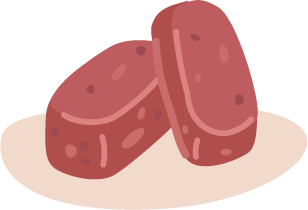
Reputable raw pet food manufacturers avoid antimicrobials and preservatives in their diets, relying on freezing for preservation. In general meat eaters such as cats and dogs are pretty resilient to the bacteria found in meat, Salmonella and E.Coli which are considered normal bacteria in the gut and rarely cause disease, unless there’s immune compromise or a particularly virulent or pathogenic strain.
Note processed food is not immune. Over the past 10 years there have been millions of tonnes of dry food recalled due to Salmonella contamination, including those brands loved and trusted as ‘premium’ vet brands. A research study in 2006 showed that Salmonella and E.Coli are commonly found in commercially available pet food both raw and processed. Reputable companies will ensure they’re sourcing quality ingredients to minimise risk of pathogenic bacteria as well as having protocols in place to monitor bacterial counts. It is imperative for pet parents to understand the risk with feeding pets has a lot to do with proper handling of pet food. Washing hands after handling all raw, cooked or processed diets (and fruits and vegetables while we’re at it - bacteria is normal and everywhere!) and not leaving food out for children to handle as well. Clearing stools in a timely fashion. We need to remember that bacteria is not something to be feared, we need to emphasise ‘treating the terrain’ and create healthy guts and immune systems to be equipped to deal with our environment.
Myth 5: Chicken necks cause paralysis.

A 2018 University of Melbourne study linking raw chicken consumption (particularly necks) to a paralysis due to Campylobacter contamination (triggering an attack on the immune system) caused a huge concern. While caution is advised for pets with a history of immune-mediated disease, there is insufficient evidence to suggest a heightened risk on healthy animals consuming raw chicken. Many individuals remain unaware of the paralysis concern associated with raw chicken necks, which, ironically, are likely one of the most commonly consumed bones by our pets. Therefore, a dose of common sense should be applied when considering this matter.
Myth 6: Raw bones are dangerous

The safety of raw bones is not a black and white issue. Raw bones can be dangerous when offered inappropriately, however, they’re nature’s toothbrush and have an amazing array of vitamins and minerals, plus they support good mental health as our pets produce their happy hormones when they’re chewing them.
I am a pro raw bone vet but it always comes with guidelines:
- Choose non-weight bearing bones. Weight bearing bones carry a much higher risk of breaking teeth. No one wants that.
- Feed them every week. Infrequent use causes bones to become too high of a possession that they end up guzzling them (choke risk).
- Use good food handling practices. Don’t leave bones outside for 4hrs on a 35 degree day and wonder why your dog gets sick.
- Learn what style of chewer your dog is to help select the correct bones. Some dogs are natural guzzlers and are more challenging to find the right bone whereas others are more careful. In an ideal world, start with a non-weight bearing bone bigger than their head so they can’t guzzle it (roo tail, chicken frame, turkey neck, brisket). Monitor and adjust.
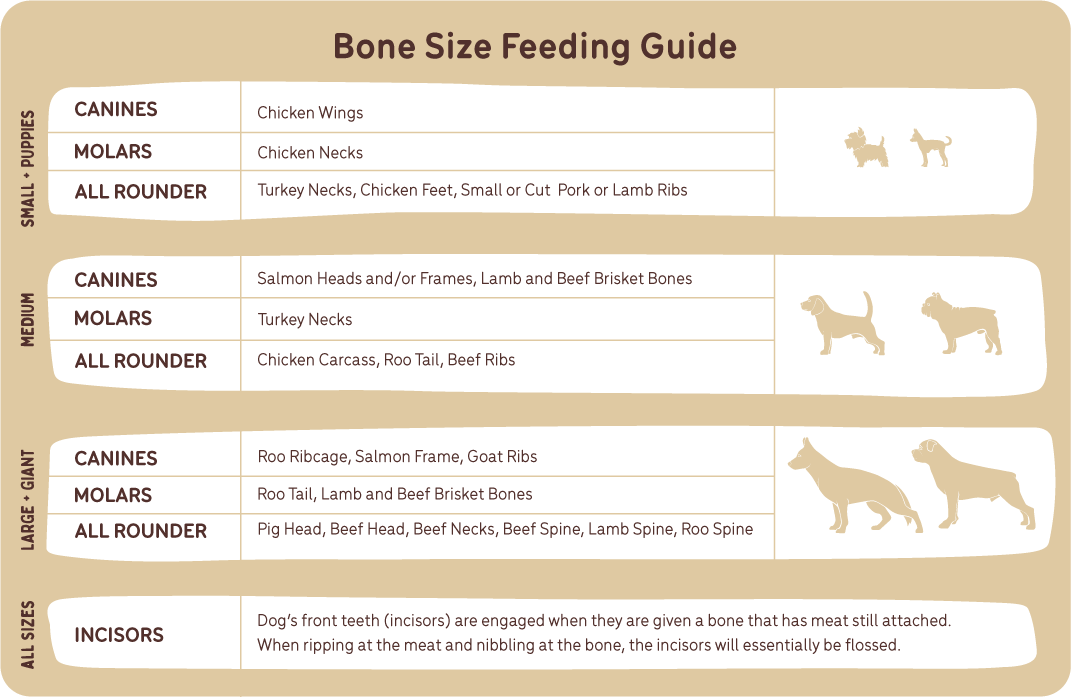
Myth 7: Dogs are omnivores.

The reason this is a contentious issue is that dogs are scavengers. They can literally eat almost anything. In some studies feral dogs will consume up to 30% of their diet as faecal material. Other times they will eat 98% meat if they can and then they will consume more carbohydrates if they’re around humans. However, two main issues put this myth to bed for me. Number one is their jaw shape. It’s a carnivore’s jaw. It only goes up and down, it doesn’t go side to side like humans (omnivores) and herbivores can, hence why they can break the big back molars if they eat bones that are too hard. My second argument is - what do they thrive on? If they get a choice, dogs will choose a diet approximating 97-98% meat. That’s pretty black and white to me, but my preferred overall classification is scavenging carnivores.
Myth 8: Dogs have evolved with humans to eating carbohydrates

Let's bust another myth with another thrive versus survive. Dogs were first domesticated by humans some 30,000 years ago no doubt as good hunting companions and over that time there have been some adaptations to their bodies. There is a variable ability of domestic dogs to possess salivary amylase, the enzyme needed to start the breakdown of carbohydrates. The majority of carbohydrate metabolism is controlled through the pancreas’ release of amylase. However, just because we have the ability to digest something doesn’t mean we should eat it. We know humans shouldn’t have alcohol and sugar every day even though we can process it. The same goes for our pets. They have the ability to digest carbohydrates (cats even less than dogs), but that doesn’t mean the majority of their diet should be carbohydrates. They don’t have a carbohydrate requirement and THRIVE on a fresh food diet high in protein and fat, and very low in carbohydrates.
Myth 9: Processed dog food is the only way to ensure pets receive a complete and balanced diet as raw diets aren’t balanced.
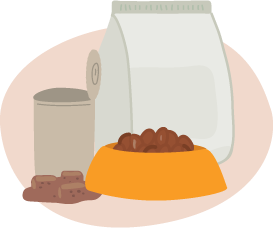
Creating a complete and balanced raw diet for your pet at home is challenging but achievable with nutritional knowledge and adherence to guidelines. It’s certainly a lot easier to buy a pre-made balanced raw though! Pet food companies adhere to guidelines whether they’re processed or fresh food companies. They are the American Guidelines (AAFCO) and European Guidelines (FEDIAF) which have minimum nutrient requirements that pets need. Unfortunately there are some issues with the guidelines in that they only provide minimum/maximum and not optimal levels and there’s little regulation on the pet food companies - most of it is voluntary to test nutrient levels. In many ways there is more risk for processed food to be unbalanced, as the processing of food, especially the high heat levels, dramatically changes nutrient levels and studies that have been done on processed food show approximately 30-60% of kibble meet minimum nutrient requirements and some studies of tinned food even over 90%! Mic drop.
Myth 10: Raw meat diets make dogs aggressive or blood thirsty.
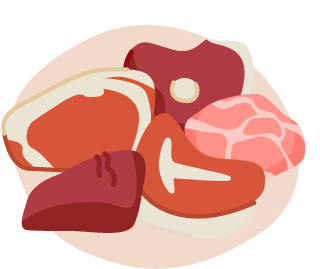
Is this myth really a thing? There is absolutely no causative relationship between meat and being bloodthirsty. Hunting behaviour is just that. It’s a behaviour that is primal. It’s genetic. It’s a stronger relationship in cats and perhaps why studies show cats still demonstrate behaviour associated with prey drive when indoor-only.
I hope you will move forward with confidence that we can feed our pets with real food and they’re not the only species on the planet that needs a 100% processed diet to thrive. I will conclude this mythbusting article by repeating one of my favourite sentences in this article. Our pets THRIVE on a fresh food diet high in protein and fat and very low in carbohydrates.This is the diet that is easiest for them to digest and what happens when we create a lack of ease in the body… dis-ease.
About the Author - Dr. Nicole Rous

Dr. Nicole Rous completed her degree with Honours from the University of Sydney in 2008. She initially worked in the UK before returning to small animal practice in Melbourne, Australia. Dr. Nicole has a keen interest in animal reproduction and has been granted Membership with the Australian and New Zealand College of Veterinary Scientists in this specialty. She is also passionate about complementary therapies such as massage and enjoys discussing ways to enhance pets' overall well-being and quality of life.
In August 2021, Dr. Nicole joined the Mont Albert Veterinary Surgery team as a director and continues to provide exceptional care to her patients. She is dedicated to utilising her knowledge and experience to assist pets in living longer, healthier, and happier lives.
Dr. Nicole's commitment to providing natural and holistic health practices for pets inspired her to establish Shy Tiger, a company that offers natural pet products made from premium ingredients sourced primarily from Australian farms and producers. Her expertise in natural health practices and dedication to providing excellent care to her patients make her a reliable partner for pet owners in Melbourne and beyond.
